What is API Monetization? | Your Guide to API Revenue Strategies
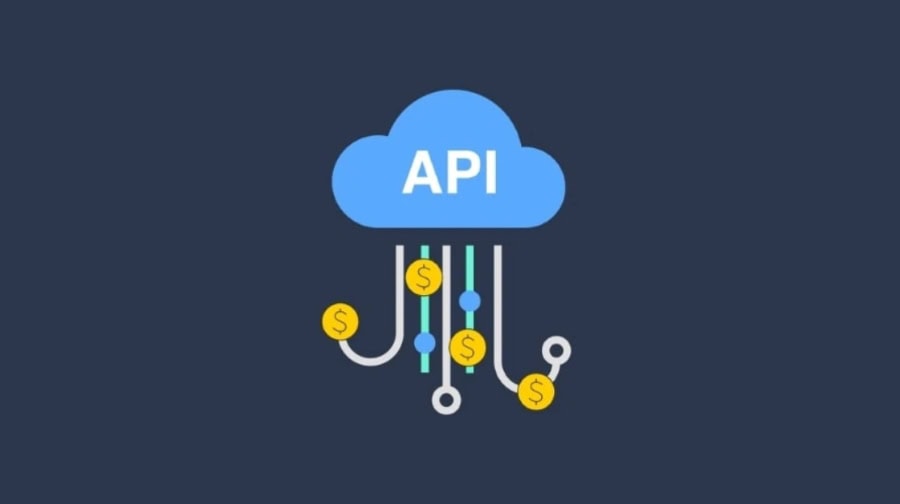
On this page:
- What is API Monetization?
- Explore API Monetization Models
- Develop Your API Monetization Strategy
- Implement API Monetization Effectively
- Billing and Invoicing Strategies
- Expand API Usage and Adoption
- Measure API Monetization Success
- Overcome Common Monetization Challenges
- Optimize Pricing with Usage Data
- Key Points to Consider
What is API Monetization?
APIs, or Application Programming Interfaces, are a technology that has developed into a robust set of protocols.
They provide a way for software applications to interact and share data effortlessly. They serve as a universal translator, enabling systems to communicate seamlessly.
For enterprises, APIs are not just technical enablers. They become strategic assets that help unlock the full value of intellectual property.
Through a secure and regulated door to their data and services, APIs allow companies to distribute innovations from others and improve overall user experiences.
In today’s digital economy, APIs are an organization’s most impactful accelerators of revenue and growth.
API Monetization monetizing them has quickly become a key strategy for realizing long-term success.
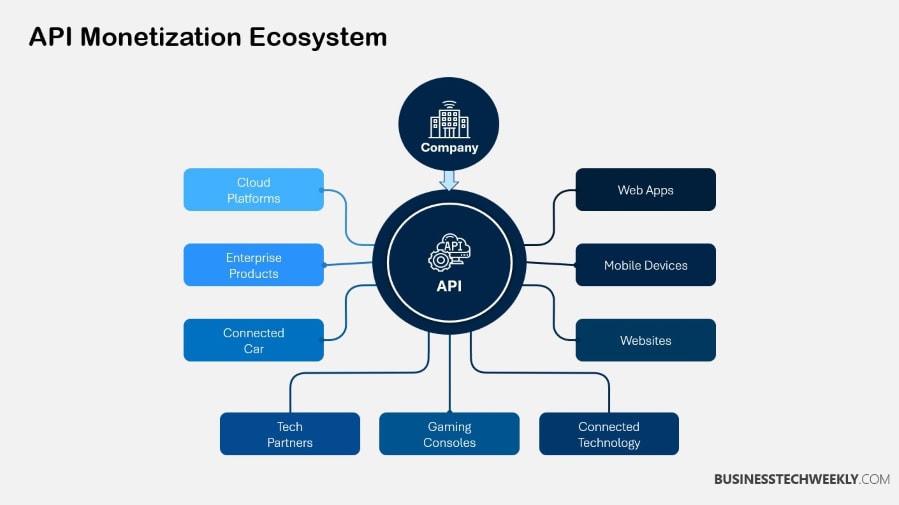
Defining API and its Purpose
APIs have become one of the most valuable resources available today, acting as digital glue to power seamless connections between software applications. An API for payment gateways directly integrates with e-commerce platforms.
This allows customers to perform purchases securely in a frictionless manner without being redirected away from the merchant’s website.
This development helps improve CX by providing convenient, seamless, and easy-to-use services. APIs are much more than just improving the user experience.
They promote competition by empowering both independent developers to build new apps and independent platform providers to maintain competitive alternatives.
For instance, mapping APIs like Google Maps allow third-party developers to create location-based services, such as ride-sharing apps or delivery tracking systems, expanding the ecosystem of digital solutions.
How Businesses Are Monetizing Their APIs
Businesses have monetized APIs in many different ways.
Direct monetization refers to when you charge consumers for access to your API. Alternatively, the affiliate model makes money off referring users to third-party services and collecting a commission.
Freemium approaches offer consumers free, limited-tier API usage. Customers interested in advanced features can access premium options for a monthly fee. A hybrid approach takes the best from these two methods to better customize monetization strategies to unique needs.
Platforms such as Moesif make it easy for businesses to implement these strategies. Third-party platforms such as full-service API monetization platforms provide essential flexibility and scalability.
Pricing models such as pay-as-you-go and value-based pricing make APIs great, underutilized tools for producing predictable revenue streams.
Why Monetize APIs?
API monetization presents companies with a great potential to increase revenue alongside receiving a competitive advantage. Putting in place sustainable revenue models fosters continued innovation and development.
By seeking feedback from pilot users and employing strategies like alerts for usage billing, businesses can ensure their APIs are both functional and profitable.
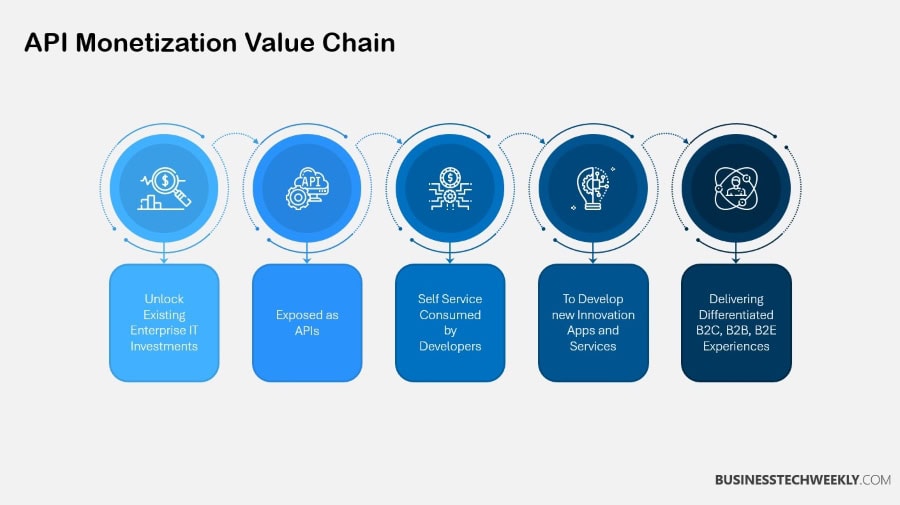
Explore API Monetization Models
API monetization is a strategic approach enabling businesses to generate revenue by providing access to their services or assets through Application Programming Interfaces (APIs).
Selecting the appropriate monetization model helps you balance your business goals with what the market needs.
It provides you unmatched flexibility and scalability. The following sections detail various monetization models, highlighting their features, benefits, and real-world applications to help you make informed decisions.
1. Pay-As-You-Go Model Explained
The pay-as-you-go model gives customers greater flexibility and cost-effectiveness, offering customers the ability to pay based on actual usage. This model serves businesses with scalable needs extremely well.
Users have the greatest flexibility to scale their usage up or down as demand and their own business needs change.
For instance, APIs that provide weather information or stock market feeds typically use this model to serve variable demand.
By matching the cost to the level of use, companies allow for predictable costs that provide value to customers and create an environment of transparency.
2. Subscription-Based Access Tiers
Subscription-based models grant users access to the APIs for a regular subscription fee, usually in the form of a tiered pricing structure.
These tiers serve as an introduction to different API usage levels, offering an API experience from fundamental access for a small business up to enterprise-grade premium tiers.
Finding the right tier design requires navigating the sharp edge between affordability and effectiveness.
For example, providing value through analytics tools at premium tiers strengthens upgrade motivation, enhancing stickiness in tandem.
This model encourages long-term recurring revenue while offering customers a solution to their specific needs.
3. Freemium: Balancing Free and Paid
In a freemium model, you provide basic API access at no cost while charging users for advanced features.
It’s one of the reasons popular marketplaces like RapidAPI use this to build their platform userbase, eventually funneling free users into paid adopters.
Clearly differentiating between free and premium services is essential to prevent user confusion.
Freemium models are great for APIs whose primary customers will be startups or developers at larger organizations who are testing solutions before investing money.
4. Transaction-Based Pricing Structure
With transaction-based pricing, users are charged per API call, so their costs perfectly match their usage. This model works best for sectors such as finance or e-commerce where transaction volumes fluctuate.
PermataBank’s APIs, embedded in fintech third party apps, used this model successfully, increasing new account growth 375% within three years.
Companies gain from producing transparency and scalableness, drawing in clients with changing requirements.
5. Revenue Sharing Partnerships
Revenue sharing is an agreement made with distribution or media partners to share the revenue earned together.
For example, The Zebra—an insurance comparison website—was able to significantly increase its market penetration by leveraging partnerships.
This model increases customer acquisition and penetration into new markets. Developing clear agreements and transparent terms can help make sure revenue is distributed fairly, building trust between collaborators.
6. Ad-Free Access Monetization
Ad-free access offers users seamless, uninterrupted experiences in return for a payment. This model makes sense for customers with the performance and user experience as a main priority, like gaming or video-streaming APIs.
Positioning ad-free options as premium upgrades boosts their perceived value, driving conversion from the most selective users who are looking for increased productivity and advanced features.
7. Premium Partner API Access
Premium partner access provides privileged features or elevated usage thresholds to important partners, building rapport and creating loyalty.
With this knowledge, businesses can design more finely tuned solutions to serve their partners’ unique needs, promoting greater and more sustainable pipeline of future collaborations.
For instance, providing advanced analytics or dedicated technical support to premium partners fosters shared growth and investment in long-term relationships.
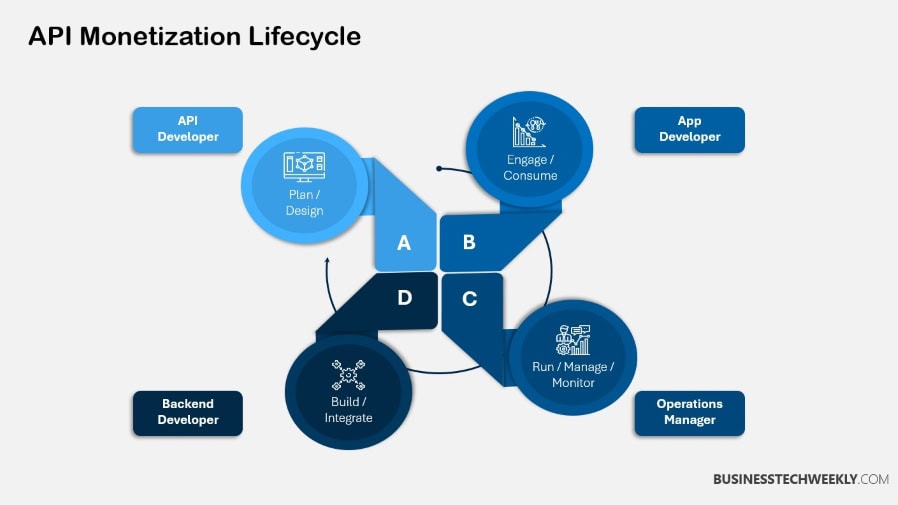
Develop Your API Monetization Strategy
An effective API monetization strategy achieves more than revenue generation alone.
It’s a mental shift from a short-term cash grab to a long-term investment that powers your business’s growth and innovation. Connect your API strategy with your overall business objectives.
Do your homework, and be willing to adapt to changing market conditions to achieve long-term success and scalability.
Define Target Audience and Value
Knowing who you want to reach is key to any monetization strategy. Make sure you spend valuable time to understand what their needs, preferences, and pain points are.
For example, if your API enables e-commerce platforms, focus on problems they need to address, like inventory tracking or payment processing.
Tools like user personas can assist in helping you to map out these pains and drivers and develop offerings that address the needs of the varied customer groups.
While determining market fit is important, clearly defining your API’s value proposition is just as crucial.
Showcase your API’s uniqueness—whether that’s quicker integration, more sophisticated data insights, or overall cost-effectiveness.
For instance, PermataBank’s APIs enabled easy integration with third-party fintech applications, powering a 375% growth in customer adoption.
This kind of transparency of value is how you capture and retain potential users.
Choose the Right Monetization Model
Choosing the best model involves careful consideration of your goals and the current state of the market. Transaction-based models, in which the user is charged per API call, work well with high-volume use cases.
Subscription-based pricing, where users pay monthly or annually, can be effective for APIs that provide a steady, contiguous value.
Freemium models give users the chance to engage with basic functionalities that hook them and lure them into paying for comprehensive features.
Run your experiments diversifying models to yield better final results.
For example, combining freemium access with a transaction-based tier adds a new layer of flexibility, serving both occasional users and heavy users.
Affiliate models, where fees or commissions are earned by driving traffic to third-party services, are another way to supplement direct monetization.
Set Competitive API Pricing
You want your pricing to be competitive while reflecting the value of your API. Conduct a landscape review to know who else is out there with similar offerings and how they structure their pricing.
It’s simple supply and demand – for example, APIs offering essential infrastructure such as payment processing gateways typically have high payout pricing because they’re so valuable.
Continuously evaluate your pricing using customer reactions and market shifts to keep it appealing while still driving profits.
Create Clear Terms of Service
Transparent and fair terms of service build trust. Include clear statements on usage rights, limitations and responsibilities.
Build in language for revision so that it can be made clear as future changes occur.
For instance, identify if access is proportionate to usage or if it doesn’t change with usage. This level of transparency goes a long way toward instilling user confidence while reducing the risk of future disputes.
Implement API Monetization Effectively
API monetization offers businesses a unique opportunity to leverage technology for growth and innovation, but achieving success requires a thoughtful and structured approach.
An implementation process architected with foresight will set you up to derive value from your APIs today, without sacrificing scalability down the road.
Provide enough resources for training and support during the early stages. That’s because this investment equips your team to ensure they truly learn how to succeed with and continuously refine your API strategy.
Monitoring usage data from the start is just as important, giving you the opportunity to optimize performance and fix problems before they become a user’s headache.
Secure Your APIs
Having a robust API security is important to safeguard sensitive data and reputation. Using OAuth for authentication and TLS encryption secures your APIs against unauthorized access. These steps protect your data from third-party exposure or hacks.
For instance, nearly all gateways provide capabilities to manage API keys and enforce rate limits, providing treatment for more controlled access.
Routine security audits are just as necessary, helping businesses spot vulnerabilities and stay compliant with changing standards. This blend of proactive and ongoing efforts creates an API ecosystem you can trust.
Implement Robust Billing System
A well-architected billing system isn’t just the foundation—it’s the backbone of successful API monetization.
It streamlines the tracking of transactions and subscriptions so you can keep things running smoothly and keep customers coming back.
Fulfill orders with solutions that easily accept any type of payment, from credit cards to digital wallets. This is how you can expose your APIs to a wider audience.
Automating billing processes mitigates the risk of human error, minimizing the administrative burden and increasing efficiency and accuracy.
Platforms, such as Moesif, even let you set alerts for billing actions related to certain endpoints to optimize operations.
Automate User Provisioning
User provisioning, which automates the administration of user accounts and access permissions, accelerates onboarding and reduces errors.
When users onboard, automation guarantees that they are granted the right level of access right away, boosting their productivity from the start.
Self-service developer portals are another example, providing users everything they need to provision and control accounts on their own.
This keeps your users happy and frees up your customer support team to focus on more complex issues!
Monitor API Usage and Performance
Measuring API consumption metrics provides unparalleled knowledge of user behavior and allows you to adjust your API offering accordingly.
When issues arise, performance monitoring can help discover the story behind the experience that users are seeing or worse, avoiding.
An analytics tool like Moesif can help visualize your monetized usage data, allowing you to make better informed decisions.
Companies such as CommunityAmerica Credit Union leverage these insights to deliver personalized marketing, fueling new growth by engaging their audience more effectively.
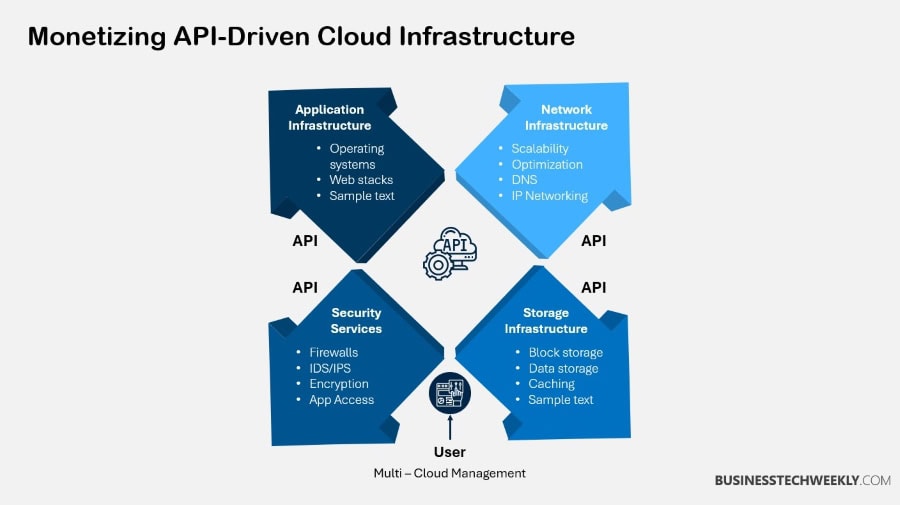
Billing and Invoicing Strategies
Bill and invoicing strategies are crucial for successful API monetization, helping ensure positive cash flow and improve customer experience.
By adopting clear, efficient processes and leveraging technology-driven solutions, businesses can minimize disputes and enhance their API monetization efforts.
Prepaid vs. Postpaid Billing
With prepaid billing, customers pay in full upfront before using any goods or services. This gives businesses confidence that the revenue is already in their pocket, making it a strong strategy for successful API monetization.
This approach is especially effective when you have a tiered pricing structure, allowing clients to choose from set plans such as “good, better, best,” offsetting their decisions with their respective wants and quotas.
Prepaid billing fits snugly within governance tools and can enhance the API monetization architecture. This feature prevents access when credits are depleted, giving businesses more power to manage their resource consumption effectively.
On the other hand, postpaid billing accommodates invoicing customers retroactively, thus fitting seamlessly into PAYG model.
PAYG, or consumption-based pricing, means you only bill customers based on their usage. That means the number of API transactions and other activities that can be quantified.
Though postpaid billing provides notable flexibility advantages to customers, businesses need to counteract possible upsides, like overdue bills or going over limits.
Selecting one of these approaches over another is a decision that needs to be made by balancing operational priorities and customer preferences, especially in the evolving API economy.
Automate Invoice Generation
Automating invoice generation through your PM/BIM solution simplifies billing processes, cuts down on manual errors and saves time.
Modern invoicing platforms can integrate seamlessly with API gateways like Kong, Tyk, or AWS Gateway, ensuring real-time synchronization between usage data and billing.
By leveraging templates for invoices, businesses ensure their documents are consistent and professional, which in turn builds trust among customers.
Automated systems can automatically flag overdue accounts, sending alerts to accountancy teams, or even cut API access for repeat delinquent customers.
Taking this proactive approach can aid in more efficient and smoother collections and keep operations running without interruption.
Handle Payment Processing Securely
Protecting customer data and establishing trust through your payment processing is critical, and secure payment processing is the only option.
Adhering to industry standards such as PCI DSS is critical for safely processing sensitive payment data.
By employing trustworthy payment gateways, firms can deliver cutting-edge attributes such as encryption and tokenization to secure consumer transaction data.
From API keys to authentication protocols, the best API gateways all offer robust features for managing your APIs.
They further provide rate limiting, an added layer of security during payment transactions.
Expand API Usage and Adoption
Increasing adoption and usage of your API is one of the major keys to maximizing your market potential.
Finally, it further cements your place as a technology leader. Your API allows the thousands of third-party developers to customize and create applications targeted at each market.
This creates new opportunities within niche segments, fostering innovation and enhancing potential revenue streams.
The global API market was valued at $6.1 billion in 2023. This further underlines the imperative importance of adopting targeted strategies to ensure adoption is maximized.
Encourage Businesses to Actively Promote APIs
A lot of the art in promoting your API comes with truly understanding your audience. Businesses will need to adapt their marketing strategies to focus on the different wants and needs of developers, partners, and end-users.
Promoting the real-world advantages of your API with customer case studies can enhance trustworthiness. Once we add in real-world testimonials, it becomes a no-brainer.
For instance, a logistics company could showcase how their API enabled a client to streamline supply chain operations, reducing costs by 20%.
These kinds of stories are powerful with potential users, helping them to see the bottom line benefits of incorporating your API. Self-service is another important vehicle to drive adoption.
Offering resources that enable developers to discover and experiment with your API on their own is key to making your API accessible, but lowering the barrier to entry.
When this approach is mixed with a hybrid monetization model, it meets even the most granular business requirements, providing businesses with the ultimate flexibility and scalability.
Onboard Developers Effectively
An easy-to-understand onboarding experience is one of the most important factors in grabbing and holding onto developers’ attention. Making integration easy with clear, robust documentation, code samples and even step-by-step tutorials sets the stage for an intuitive experience.
Consider, for instance, interactive tutorials that lead developers through the process of setting up a given API—these help minimize learning curves and build confidence.
Providing strong onboarding support, whether through live chat or a dedicated team of onboarding specialists, can help users overcome challenges right away.
Provide Excellent Developer Support
Responsive support channels are vital for addressing developer inquiries efficiently. Having dedicated resources, like technical account managers, helps educate developers and encourage developers to maximize their API usage.
Community forums deepen this support by encouraging peer-to-peer interaction, allowing developers to share their solutions and best practices to thrive.
Build a Thriving Developer Community
Building and nurturing a developer ecosystem fosters productive communication and creates opportunities to innovate.
Webinars, developer meetups, and hackathons are great ways to attract developers and highlight the full potential of your API.
Virtual spaces for collaboration and dialogue around these resources can help deepen these connections and create advocates among developers.
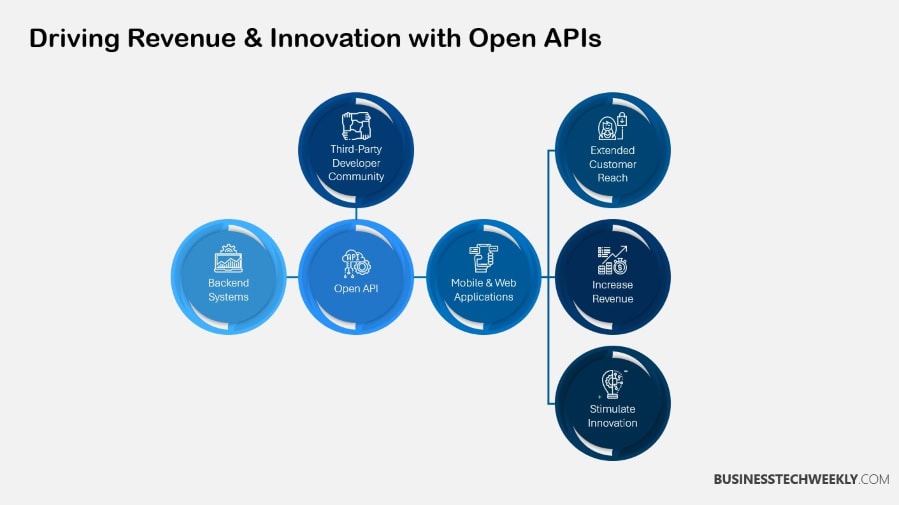
Measure API Monetization Success
Evaluating the success of your API monetization strategy requires careful analysis of metrics that reflect your business goals and customer value.
Developing KPIs aligned with your goals is essential in the API economy. By regularly analyzing data, you’ll be positioned to achieve sustainable growth and maximize profitability through successful API monetization.
Key Performance Indicators (KPIs)
KPIs are the measurable performance indicators that help you track the success of your API monetization initiatives.
Measures like increased revenue, new customer acquisition, and retention rates provide tangible evidence of your strategy at work.
For example, measuring customer acquisition cost vs customer lifetime value can help you understand the long-term profitability of your API.
By establishing clear and specific targets for each KPI, you’ll be set up to track progress in a meaningful way.
Additionally, some models like a subscription-based model make it easier to track revenue growth and usage patterns, delivering a more predictable framework for analysis.
Tools such as Zuplo further enhance this process. Their capabilities go beyond standard BI tools, engineered specifically for pricing management and analytics, ensuring your KPIs stay actionable and results-focused.
Track API Usage Metrics
Understanding how consumers engage with your API is crucial for a successful API monetization model.
By tracking consumption metrics, such as the frequency of API calls and the growth of user adoption, you can gain valuable insights into utilization patterns and preferences.
This knowledge is essential for optimizing your API services and adapting to user needs effectively.
Real-time tracking enables quicker adjustments, ensuring your API remains responsive to user demands.
A pay-per-call model exemplifies direct API monetization, linking revenue directly to usage and providing transparency regarding performance.
Analytics platforms like Zuplo facilitate the visualization of usage trends, allowing you to pinpoint growth opportunities and enhance your API products.
For example, utilizing Google AdSense API data helps developers optimize ad placements, ultimately increasing API revenue for all stakeholders involved.
Analyze Revenue and Profitability
Analytics is the crux of measuring monetization success. We’ll focus on revenue in this section and profitability thereafter.
Understanding which revenue streams will best succeed, be it via subscription-based models, pay-per-call strategies, or revenue-sharing arrangements, offers a clear picture of what’s most effective.
High-performing APIs can be prioritized while underperforming ones need to be further optimized or reconfigured.
Add in regular financial reviews along with tools such as Zuplo’s usage analytics, and you can begin to align your monetization efforts with wider business objectives.
Take revenue-sharing models, as Google AdSense exemplifies, where an API provider’s earnings are directly linked to their customers’ success, encouraging growth on both sides and long-term sustainable profits.
Overcome Common Monetization Challenges
While API monetization provides enormous opportunities in the API economy, businesses face challenges that affect their ability to drive revenue and keep customers happy.
Tackling these hurdles requires a nuanced approach that values security, flexibility, and user-centric monetization methods, including direct API monetization models.
Here are some key ways businesses can re-focus their API monetization efforts to ensure sustainable success.
Security and Access Control
Robust security is foundational for monetizing APIs effectively. Without proper safeguards, APIs risk unauthorized access that could compromise sensitive data or disrupt services. Implementing access control mechanisms, such as API keys or OAuth protocols, ensures only authorized users gain entry.
Safeguards like rate limiting and quotas protect against misuse, creating a secure environment for legitimate users. Regular security assessments help identify vulnerabilities, enabling businesses to stay ahead of potential threats.
For instance, PermataBank achieved success by embedding secure banking functionalities into fintech apps, resulting in a 375% growth in new accounts over three years.
This underscores the role of security in fostering trust and driving adoption.
Managing API Deprecation
API deprecation may be an unfortunate reality of change, but it doesn’t have to be a death sentence. Phasing out legacy APIs should be done cautiously so that users experience the least amount of disruption possible.
Transparent communication goes a long way — giving proper notice, clear timelines, and alternate routes means customers can plan ahead rather than rushing at all costs.
Establishing deprecation strategies, including providing long-term support for older versions, builds a foundation of trust. Creating pricing models in alignment with resource consumption helps pave a path with less friction.
Usage-based billing delivers a value confirmation to users throughout these transitions.
Handling Breaking Changes Gracefully
Breaking changes can severely impact existing workflows if introduced haphazardly. When versioning APIs to keep backward compatibility, the impact on users is minimized.
Pair that with clear documentation and open communication about updates, and your business can help users navigate changes.
This method reduces downtime during the entire process, which further supports the solidity of the API and keeps active users active.
Preventing API Abuse
Abuse, like overuse or authentication circumvention, can burden server resources, negatively impacting reliability.
Rate limiting, quotas, and monitoring tools that flag excessive use are necessary to detect and reduce these types of abuse.
Usage-based billing provides this added value by matching costs with usage.
By implementing this strategy, developers begin to view an API as a trustworthy and valuable asset.
Optimize Pricing with Usage Data
API monetization is at the core of successful API business models, but it all starts with informed pricing strategy and usage data is crucial to getting there.
By leveraging real-world consumption metrics, businesses can make smarter decisions, aligning pricing models with customer behavior and market demands.
This strategy improves both current revenue potential and future customer experience, developing long-term loyalty and increasing bottom line profitability.
Analyze API Consumption Patterns
Whether customers hit your API once or 100 times a day, understanding usage patterns is crucial to finding the right pricing model.
Consumption patterns display critical insights – like when the heaviest usage happens, which endpoints are most commonly accessed, and total API call volumes.
For example, monitor measures such as how many different contacts you emailed in each month. That data can later inform you where major traffic areas are within your service.
Segmenting users by their digital traffic behavior dives even deeper into this analysis.
Segregating customers into distinct groups, such as large, frequent business customers or light, infrequent personal consumers, allows for more efficient marketing and more precise, dynamic pricing.
Analytics tools like Tableau or Google Data Studio are essential for visualization and pattern recognition.
They synthesize thousands of pages of raw data into actionable and informative insights. A frictionless developer experience greatly simplifies compute FinOps.
Second, it gives real-time, tenant-level usage insights, which promote a more transparent, trust-building billing process.
Identify High-Value Features
Just as every API has more interesting features, features that resonate with users most. By identifying these high-value functionalities, TNS enables businesses to prioritize their time, money, and efforts on the functionalities that drive the most value.
For instance, features that allow for easy integration, as in the case of Apinomy’s full compatibility with Stripe or Chargebee, tend to have the highest user engagement.
Soliciting direct input via surveys or through support tickets makes sure you’re focused on the most pressing updates first.
PermataBank has made a remarkable integration of its banking services into fintech applications.
By targeting only the most valuable features, they significantly increased engagement, leading to a 375% increase in account creation within three years.
Adjust Pricing Based on Demand
Flexibility in pricing models becomes even more of a necessity when working within a competitive marketplace.
By moving to usage-based billing, utilities can create an equitable model in which customers only pay for the benefits they use, leaving the fixed unpaid at.
Keeping an eye on competitor pricing and market trends provides more insight on where to make updates.
Dynamic pricing models, which dynamically adjust to meet demand in real time, aid in revenue maximization.
As an example, increasing prices at peak usage times would preserve their bottom line and protect customer goodwill.
Key Points to Consider
- APIs are dynamic instruments that facilitate interaction between different software systems, promoting creativity and improving user experiences. Their monetization has strong revenue potential for businesses that can help them realize it.
- API monetization involves turning APIs into a source of revenue. This can be accomplished through a number of models such as pay-as-you-go, subscription tiering, freemium, and transaction based pricing. Each model has its own strengths suited to different business applications.
- Selecting the right monetization strategy requires understanding your target audience, evaluating market conditions, and aligning the chosen model with customer expectations to maximize value and revenue.
- Successful implementation of API monetization hinges on robust security, clear terms of service, effective billing systems, and continuous performance monitoring to ensure smooth operations and user satisfaction.
- Simplifying developer onboarding and offering superior support are keys to encouraging API adoption. Creating an engaged and informed developer community will help drive adoption and build ongoing productive use.
- Measuring success using key performance indicators (KPIs), such as revenue growth, customer acquisition, and API usage metrics, helps businesses refine strategies and sustain growth in the competitive digital economy.

